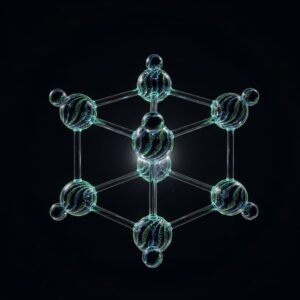
The Department of Interface Science at the Fritz Haber Institute has unveiled groundbreaking research that could revolutionize green hydrogen production. By focusing on the oxygen evolution reaction (OER), a pivotal process in water electrolysis, researchers have identified a critical transition point in catalyst kinetics. This discovery, made possible through advanced spectroscopy and temperature-dependent kinetics, highlights the role of ion solvation at the catalyst interface.
Led by Dr. Martinez-Hincapié and Dr. Oener, the study sheds light on how catalysts function in aqueous environments, a key to improving hydrogen production efficiency. The research underscores the necessity of viewing the catalyst-electrolyte interface as a unified system, rather than separate entities.
Understanding Catalyst Activity
The research team at Fritz Haber Institute has made significant strides in understanding catalyst behavior, which is crucial for advancing green hydrogen technologies. Efficient catalysts are essential for splitting water molecules, a process that forms the backbone of hydrogen production. The study’s findings suggest that the catalyst’s activity is intrinsically linked to the need for solvation of ions at the catalyst interface.
Discovering a Transition Point
The study, conducted within Prof. Roldán Cuenya’s department, utilized cutting-edge techniques to investigate the OER, a bottleneck in water electrolysis. Sluggish OER kinetics can impede hydrogen production, but the researchers discovered a key transition point where the catalyst’s activity shifts dramatically. This shift occurs when the catalyst moves from being limited by excess charge buildup to becoming highly active.
The Role of Solvation
A pivotal aspect of the study is the role of interfacial solvation, where ions gain or lose solvent molecules. This process is crucial for the catalyst’s intrinsic activity. Dr. Oener emphasizes,
“We should really think about the catalyst-electrolyte interphase as a whole, not in separate terms. We cannot understand the stabilization of excess charge on the solid side without the response of the solvent and we cannot understand interfacial ion solvation without carefully considering what happens on the solid side.”
This insight is critical, as the solid interface undergoes significant structural and chemical changes during the reaction.
Technical Insights and Implications
In technical terms, the study reveals that the catalyst’s kinetics are governed by a complex interplay between the chemical and structural adaptation of the oxide surface and the response of interfacial water molecules. Using operando X-ray spectroscopy, the team observed these adaptations at a crucial transition potential in the kinetics. Notably, this transition potential is independent of the catalyst loading or its surface area, indicating that the catalyst’s activity is inherently linked to its ability to build up excess charge to interact with solvated ions from the liquid electrolyte.
Future Directions and Impact
Prof. Dr. Beatriz Roldán Cuenya highlights the importance of combining various operando spectro-microscopy techniques to gain deeper insights into catalyst behavior. This research not only advances our understanding of catalyst activity but also holds promise for improving energy conversion technologies. The team is committed to further exploring these findings, which could significantly impact the fields of energy and chemical conversion technology.
The announcement comes as global interest in green hydrogen as a clean energy source continues to grow. With its potential to reduce carbon emissions and provide a sustainable alternative to fossil fuels, advancements in hydrogen production technologies are crucial. The move represents a significant step forward in the quest for more efficient and sustainable energy solutions.







